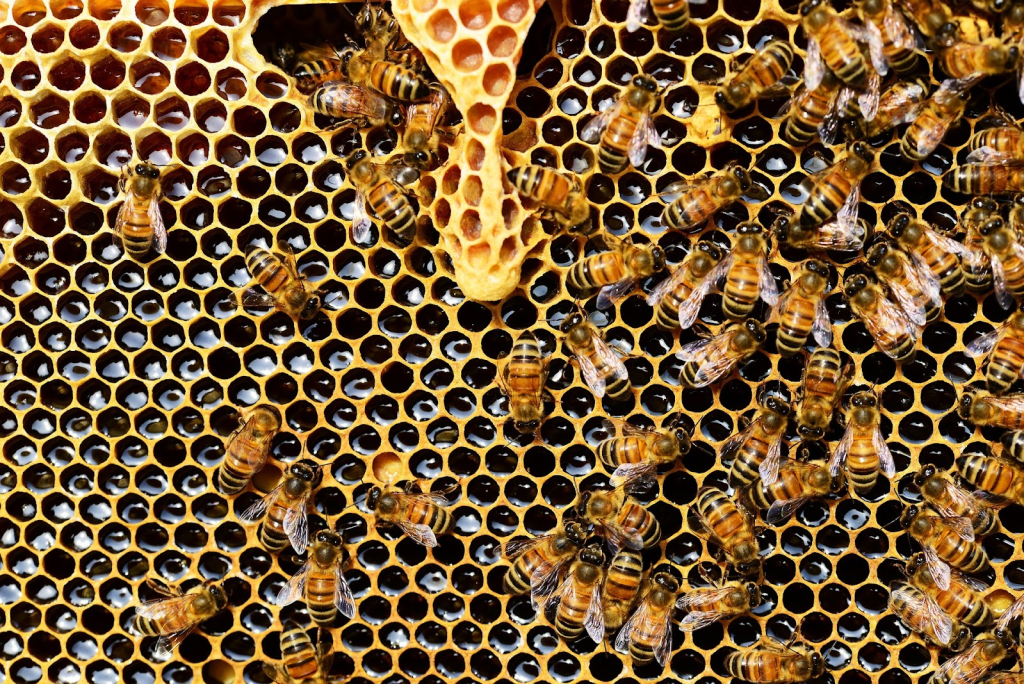Bees have been around for millions of years, but we’ve only been celebrating World Bee Day since its creation in 2018 by the United Nations General Assembly. Why should we celebrate the insect? Well, although they only reach 2 mm to 4 cm in size, the iconic pollinators help produce more than $50 billion worth of crops each year in the U.S. alone! Bees are vital to economics and agriculture, but they also show up in pop culture.
Whether it’s Beyoncé naming her fanbase the “Beyhive” (plus the beehives on her roof) or the staying power of Jerry Seinfeld’s “Bee Movie” and the memes it spawned, the fuzzy insects are worth being celebrated and protected, especially since human actions are the largest part of the decline in bee populations across the globe.
This year’s World Bee Day is May 20, and the theme is “Bee engaged in pollinator-friendly agricultural production.” With that in mind, we will dispel major myths, list some surprising facts, highlight innovative startups, and share how you can protect these essential creatures.

Common Myths And Misconceptions
Few things are as synonymous with one another as bees and honey. However, less than 4% of all of them actually make it. Including the honey bee, only 800 of the 19,000 bee species can make the sweet substance.
Sticking with the letter H, the next misconception is all about hives. Contrary to popular belief, only about 3% of the world’s bees live in hives. Most reside in underground or tree-based nests and live alone.
World Bee Day is bad news for wasp lovers because although belonging to the same order of insects, wasps are not bees. Other than being much more terrifying, another difference is that wasps are carnivores, and bees are vegetarians.
Un-Bee-Lievable Facts
You might already know that the buzzing produced by bees is the sound of their wings rapidly beating, but did you know they’re fluttering 230 times per second? Check out these fascinating facts:
- Bees can reach up to 20 miles per hour — for reference, Usain Bolt ran a top speed of 27.33 mph!
- Of all the insects in the world, the honey bee is the only one that produces food eaten by humans in significant quantities.
- An average honey bee only makes one-twelfth teaspoon of honey in its lifetime, meaning it would take the life spans of about 1,300 of them to fill a typical jar.
- Honey bees can’t speak, so they communicate complex information through a bee or waggle dance.
- Bees have five eyes but can’t see the color red. Luckily their sense of smell, which is 100 times stronger than a human, makes up for it.
Bee-Based Biotech Startups And Tech
The world has shifted in recent years to focus more on sustainability, climate change, and protecting endangered species. Bees are at the top of the list, and innovative startups are developing new methods and technologies to protect and enhance the creatures.
California’s Beeflow is a biotechnology company creating supplements that boost bee health. The startup feeds the pollinators nectar infused with a special serum that improves their cold-weather endurance and pollen-carrying capacity.
If that’s not enough, the company is replicating the scent of certain flowers to train its honey bees to target specific crops.

In Georgia, Dalan Animal Health developed a vaccine that protects honey bees from disease — the first U.S. Department of Agriculture-approved insect vaccine. It is injected into royal jelly, a substance consumed by all larvae in a colony. The vaccine prevents American foulbrood, a bacterial illness capable of wiping out entire bee populations that spreads rapidly through spores. While the disease has died down since its peak in the late 1800s and early 1900s, scientists see this as a turning point for developing other insect-based vaccines.
Ways To Protect And Support Bees
One of the simplest ways to help is to plant more flowers in your backyard. Generally, the most dangerous periods for bees are early spring, mid-summer, and late fall. If you’re not a huge gardener, try planting flowers during those time windows.
Pesticides and herbicides are two major human-led contributors to bee population declines. They harm their immune systems, so growing a chemical-free landscape is another way to lend a hand.

Many nonprofits and organizations are working to protect, support, and save bees. They offer ways to donate, community-led programs, partnerships, and educational awareness campaigns. If you’re unsure where to start, try checking out the following: the Bee Conservancy, Project Apis m., the National Wildlife Federation, and Operation Honey Bee.
There are at least 2 trillion bees on Earth. It’s easy to feel detached from the alarming decline in their populations worldwide. We should feel alarmed — after all, one-third of every mouthful of food in the U.S. is thanks to the fuzzy, flying creature. World Bee Day is just a day, but the insects are much more: they’re crucial to humankind.





